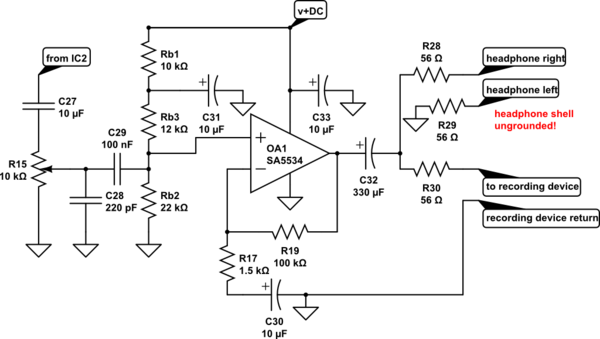I am building a 20 Mhz RF receiver out of the NASA radio JOVE instruction manual and they have recommended the use of LM387 as an audio amplifier. SA602AN as mixer IC:
-
2$\begingroup$ So what is your question? Why do you want to replace those ICs? What's the problem? $\endgroup$– Marcus MüllerCommented Oct 24, 2016 at 16:49
-
1$\begingroup$ This message is for the one who, through blunder downvoted this question. His question is clearly stated. The information is also clearly stated. And his intent for an answer is also clearly stated. It fits all guidelines and main site question requirements. So for the one who carelessly downvoted this question you should check your decision again. Thank you. $\endgroup$– Scientist Smith YTCommented Mar 27, 2020 at 2:58
4 Answers
LM387 is just a really old, ordinary op-amp as far as I can tell. It has a funny pin configuration, so if you have a PCB already made you need to make modifications. I suggest cutting the traces, scraping off the solder mask, and soldering wires in place with the right layout. Look for datasheets on the internet for the pin configuration. For old stuff Google, for modern stuff I prefer an online reseller like Mouser. Datasheets are free even if you don't buy the part.
Any cheap opamp will work. TL072 is very common. NE5532 is also not hard to find and it can drive headphones a little louder. Either costs less than $1 USD. Or just buy whatever is available from your favorite electronics source. If you want to be safe, buy a DIP socket and then if you get the wrong op-amp you can easily swap it for another.
The SA602 is still widely available so I would stick with that. It also goes by the name NE602. Don't search for the "AN" at the end: it will severely limit your options. Just be sure you are getting the right package (like DIP8).
The SA602AN looks to be still available from many of the usual distributors. (Check octopart.com or findchips.com to see which distributors have them in stock.) The LM387 is apparently long obsolete. A quick web search didn't reveal any pin-for-pin compatible parts still being manufactured, so if you're using the printed circuit board from the kit, then you'll need an actual LM387; they aren't hard to find on eBay. If you're building your own circuit, either by creating your own printed circuit board or wiring the circuit by hand, then there are various alternatives. A quick web search for "lm387 equivalent" suggests the NE5532 or the OPA2350 as potential substitutes, which may require minor circuit alterations. Good luck.
https://www.futurlec.com/Linear/LM387Npr.shtml
This site claims to sell them. I do not know anything about the company, just the first source that came up.
-
$\begingroup$ Welcome to ham.stackexchange.com! $\endgroup$ Commented Mar 26, 2020 at 22:14
You may find the SA612 chip more readily available than SA602. I believe the SA602 is an identical chip with slightly tighter specs than SA612. SA612 is pin-compatible replacement.
As for the LM387 (IC2) low-noise preamp - you might substitute a two-transistor amplifier instead, shown below. It will give better low-noise performance, with similar gain (about 30 dB). It has better low-noises performance because its input impedance is tailored to be 1500 ohms. Note that R11 (1500 ohms) is not present...replaced by the amplifier's input Z of 1500 ohms. You can substitute many NPN transistors for the 2N3904's shown (2n2222, 2n4401).

simulate this circuit – Schematic created using CircuitLab
As others have stated, the following LM387 (IC3) circuit can be replaced with a standard linear amplifier using any one of many opamps - it need not be low-noise. A SA5534 is shown, could be NE5534.
Driving a 8-ohm loudspeaker is really not necessary - a standard opamp can drive 32-ohm speakers with a 56-ohm series resistors added. You really only need to listen to ensure that it is extra-terrestrial noise that you're receiving, and not interfering man-made signals.

